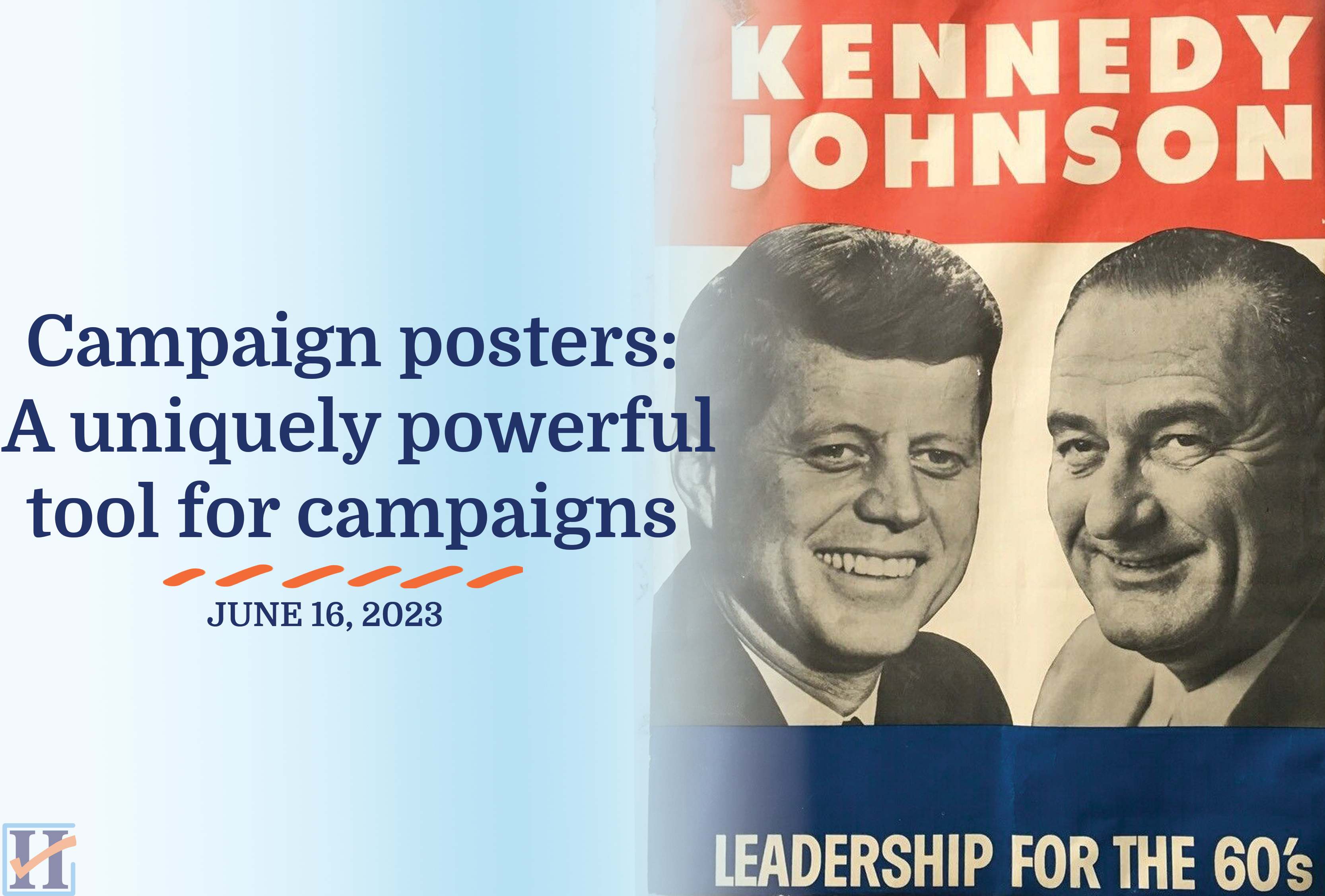Campaign posters have played a significant role in political campaigns, fundraisers, and politics in general throughout US history. These visual communication tools conveyed messages, promoted candidates, and influenced public opinion.
Campaign posters have evolved to reflect new technology, design trends, and the ever-evolving political landscape. Despite the always-present digital media, campaign posters are still essential to modern political campaigns to help candidates connect with voters and volunteers.
In this article, we will explore the history and importance of political campaign posters, their possibilities, how they work, and their benefits so that you can be inspired and use them effectively in your own campaigns.
What are political campaign posters?
Political campaign posters are visual communication tools that political campaigns and organizations use to support and complement political activities. Posters typically feature a candidate’s name, photo, and critical messages or slogans that capture the campaign’s ethos.
Campaign posters have been critical to political campaigns and public movements for centuries. Some well-known examples include suffragettes advocating for women’s right to vote and more recent campaigns like Barack Obama’s “Hope” poster.
Campaign posters take the campaign to the streets, increase visibility, maintain relevance among the general audience, and inspire curiosity about the campaign.
Of course, posters, just like candidates and campaigns, have evolved over time. While the rise of digital media and television advertising has shifted the focus of political campaigns, campaign posters are, and will remain, a classic and essential component of modern political campaigns.
What are the benefits of political campaign posters?
Political campaign posters offer numerous advantages in political campaigns, fundraisers, and nonprofits. Some of the key benefits include:
Versatility
Campaign posters can be used in various contexts and for different purposes. Some of these contexts are promoting a candidate, advocating for a cause, or raising awareness about an issue. The posters can be tailored to suit a campaign’s specific needs, making them a versatile tool for communication and promotion.
Visibility
Posters are highly visible and can be placed strategically to target a specific audience. General visibility can be accomplished by placing the posters in high-traffic areas, while a more strategic approach is to place posters based on where the target audience is likely to see them. Either way, campaigns can effectively increase their visibility and reach.
Flexibility
Campaign posters offer flexibility in terms of design, messaging, and placement. They are easy to update or replace and can be adapted to changing campaign strategies and new trends in the political landscape.
Affordability
Compared to other forms of advertising (such as television or radio ads), posters are relatively inexpensive to produce and distribute. They are a great and cost-effective option for campaigns with limited budgets or those looking to maximize their return on campaign investment.
Inspiring curiosity and driving action
A well-designed campaign poster can grab the attention of potential supporters and inspire curiosity. Presenting compelling visuals and messaging on a poster can encourage people to learn more about the campaign, attend an event, or even take action to support the candidate or cause.
Evolution of campaign posters
Throughout history, political campaign posters have evolved significantly artistically and politically. Posters adapted to changes in technology, design trends, and political progress.
Let’s look at some notable examples and their impact on elections.
Early campaign posters
In the 1800s, campaign posters featured portraits of candidates looking statesman-esque. They were printed on wood or metal plates while using the colors sparingly. Those early posters often included extensive text detailing the candidate’s policies and political positions.
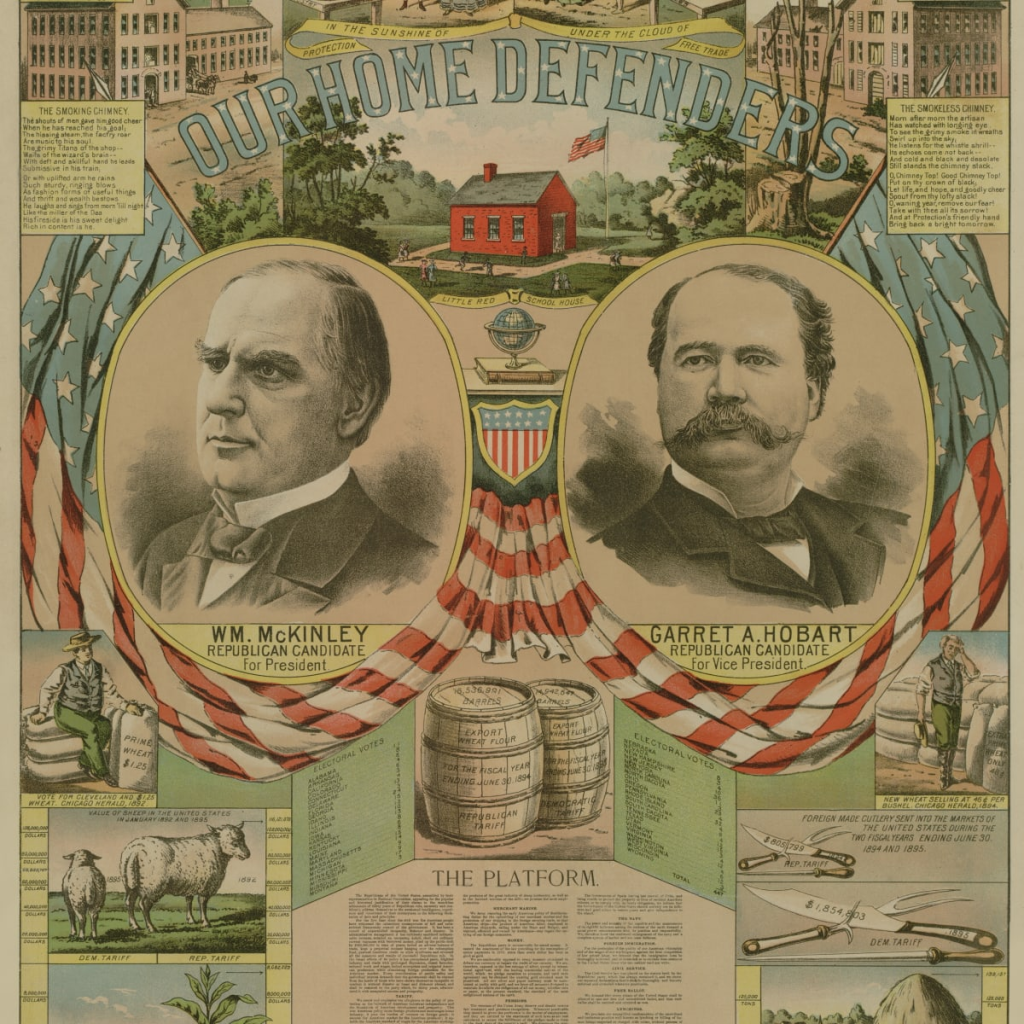
The 1896 Republican Party presidential campaign poster for William McKinley and Garret Hobart
20th century posters
With the rise of advertising agencies in the 1960s, campaign posters began to go more in the direction of advertisements by incorporating graphic elements, colorful imagery, and more abstract messages.
For example, the 1968 campaign of antiwar candidate Eugene McCarthy featured innovative designs and somewhat psychedelic imagery.
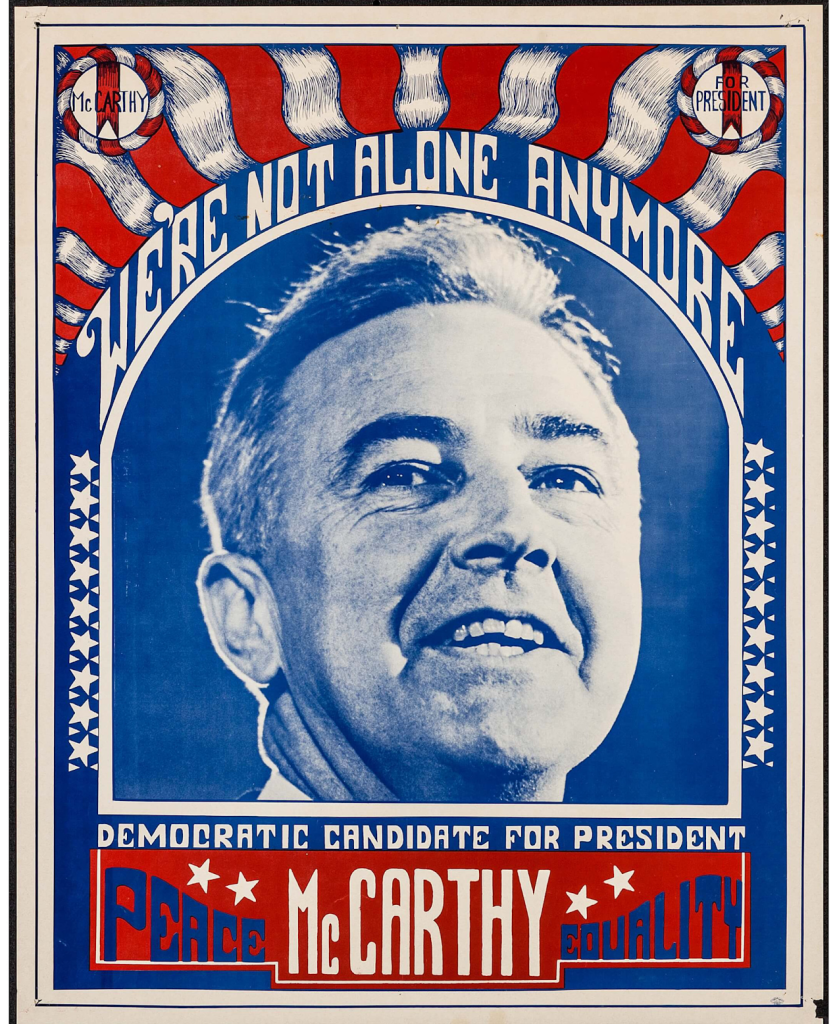
Eugene McCarthy for President poster in the 1968 campaign.
The renowned sculptor Alexander Calder created a memorable limited-edition poster in 1972 for Democratic presidential nominee George McGovern by incorporating elements of Pop art.
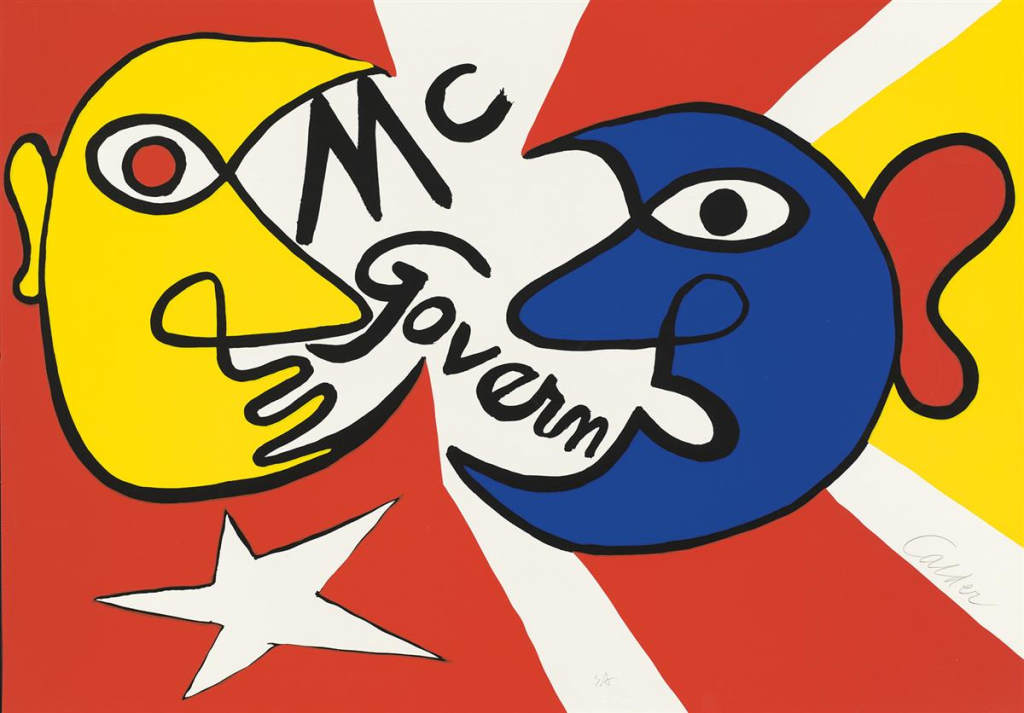
Poster of the Presidential campaign featuring South Dakota Senator George McGovern against the incumbent President Richard Nixon
Modern campaign posters
Recently, campaign posters have focused more on branding and spreading powerful and straightforward messages.
One of the most iconic examples is the 2008 “Hope” poster that featured a stylized stencil portrait of Obama in solid red, beige, and blue, with the word “hope” below the image. The author used a simple color palette, firmly capturing the essence of Obama’s campaign message.
The simplicity and boldness of the design, together with the powerful message of the word “hope,” made this poster highly effective in capturing voters’ attention and getting support for Obama’s campaign.
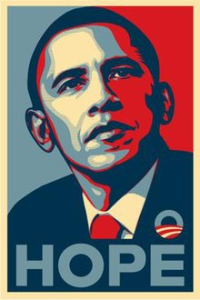
Additional examples of effective political campaign posters
We have seen some examples, but US history is full of bold and innovative examples of political posters.
Let’s take a look at a couple of more notable examples:
“I Want You for U.S. Army” Poster (1917)
This iconic poster features Uncle Sam pointing at the viewer with the message “I Want You for U.S. Army,” created by James Montgomery Flagg during World War I. The striking imagery and powerful slogan made this poster highly effective in gathering public support for the war and recruiting soldiers.
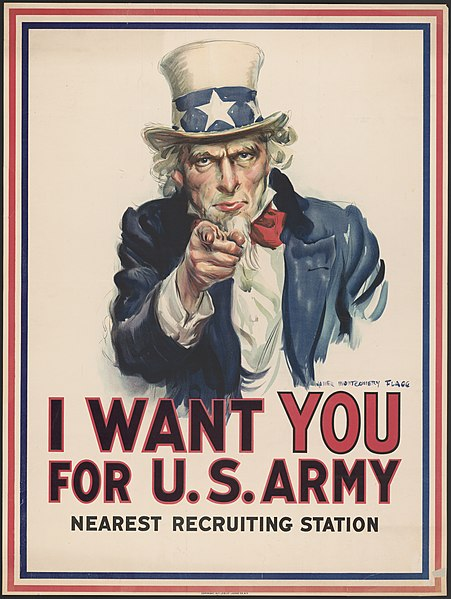
Women’s Suffrage Movement Posters (Early 20th Century)
In the early 20th century, posters advocating for women’s right to vote used bold graphics and slogans to build awareness around the voting issue. These posters played a significant role in shaping public opinion and promoting the suffrage movement.
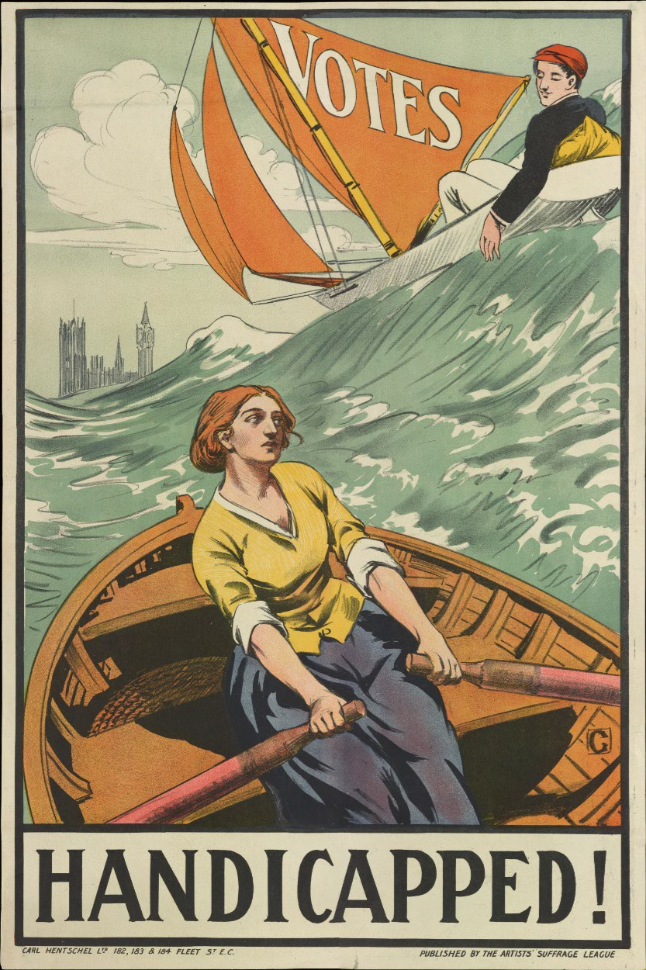
“We Can Do It!” Poster (1943)
Designed by J. Howard Miller, the “We Can Do It!” poster was created to boost morale among female workers during World War II.
The poster featured a strong, confident woman flexing her arm muscles, symbolizing working women’s strength and determination to support the war efforts. And this poster has, in the meantime, become an iconic symbol of female empowerment.
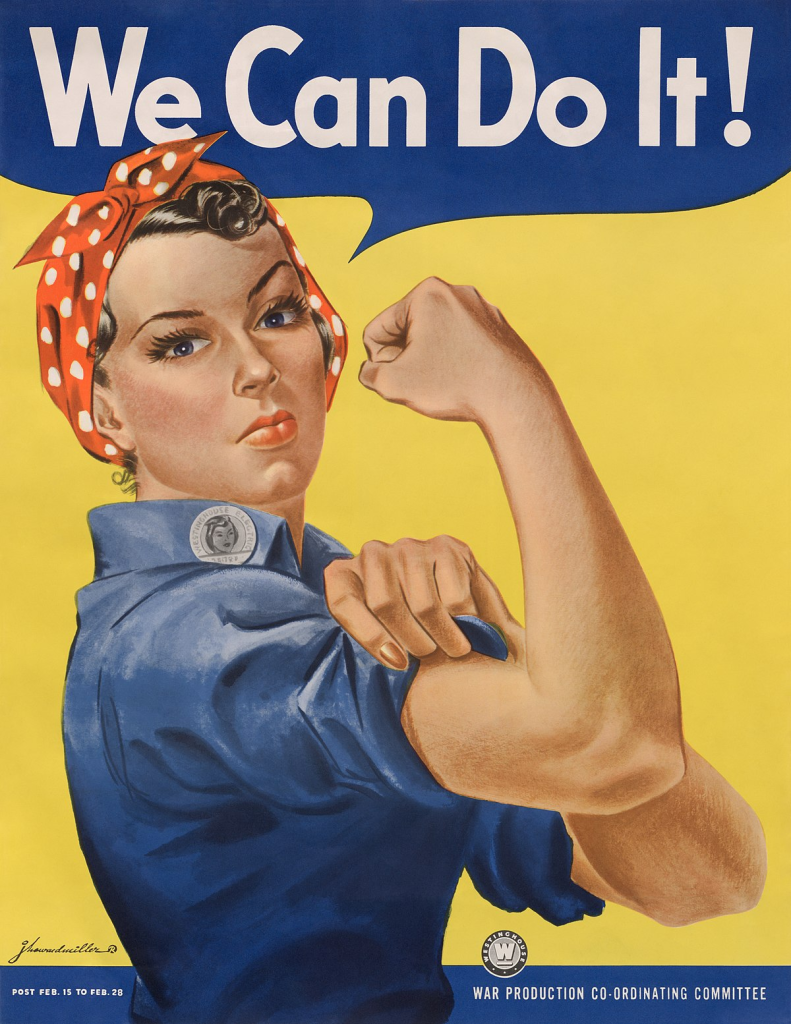
As you can see, all these examples showcase the impact that well-designed political campaign posters can have on voters. Their critical elements were powerful visuals, clear messaging, and a solid connection to the candidate or cause.
If you incorporate these elements into your campaign posters, you, too, can create impactful designs that resonate with your audience.
Best presidential campaign posters in US voting history
As mentioned already, Barack Obama’s “Hope” Poster from 2008 is one of the most prominent examples of a successful and effective presidential campaign poster.
But there are a few more examples of noticeable presidential campaign posters:
Richard Nixon’s Campaign Poster (1972)
This poster, sponsored by “Young Voters for the President,” featured a simple yet striking design with Nixon’s face and the slogan “Nixon Now.” The design was minimalistic, with clear messaging that helped to convey Nixon’s message and appeal to young voters during his re-election campaign.
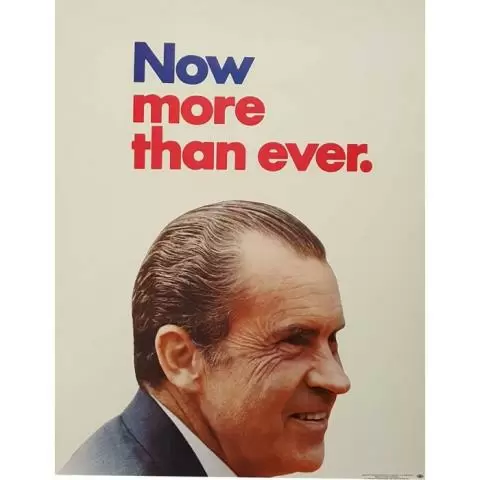
John F. Kennedy’s Campaign Poster (1960)
This poster features a portrait of Kennedy with the slogans “A Time for Greatness” and “Kennedy for President”. The great thing about the design was that it effectively captured Kennedy’s charisma and the optimism of his campaign, which eventually contributed to his successful election.
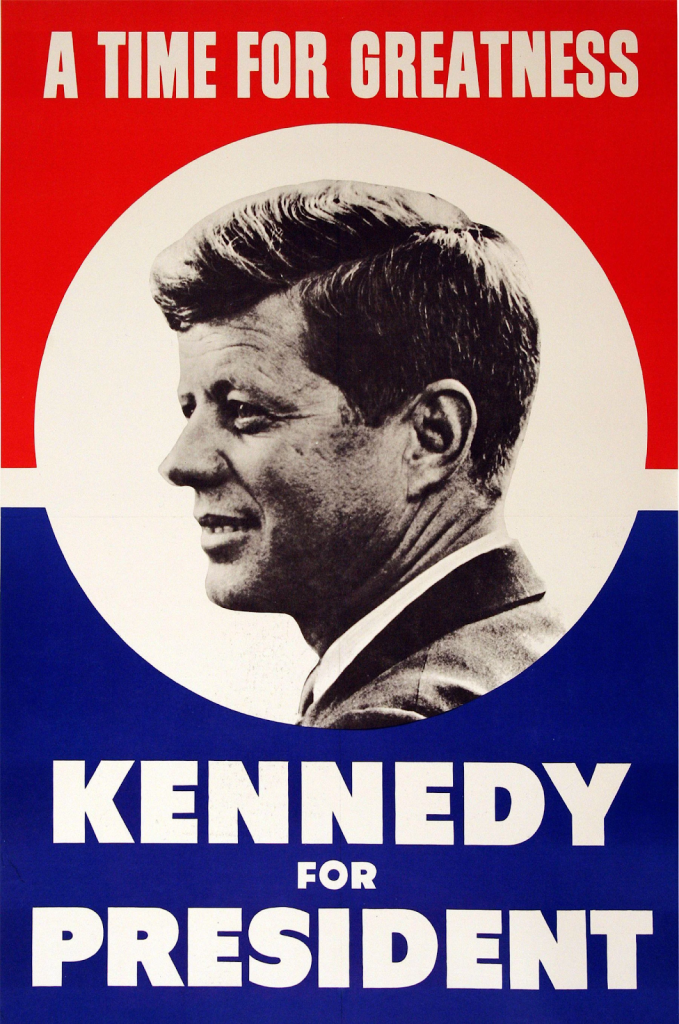
Dwight D. Eisenhower’s Campaign Poster (1956)
Eisenhower’s re-election campaign poster featured the slogan “I Like Ike” and a simple illustration of his face. The catchy slogan and straightforward design made this poster sticky and contributed to Eisenhower’s re-election.
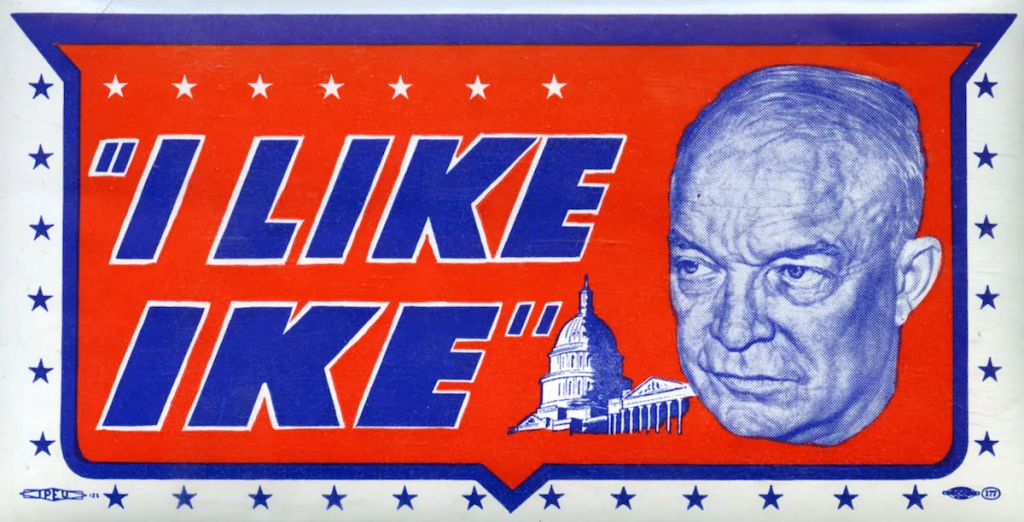
Abraham Lincoln’s Campaign Poster (1860)
Last but not least – this poster featured a portrait of Lincoln and his running mate, Hannibal Hamlin, along with the slogan “The Union Must and Shall Be Preserved.” The strong message and dignified portraits helped to convey Lincoln’s commitment to preserving the United States during a time of great division.
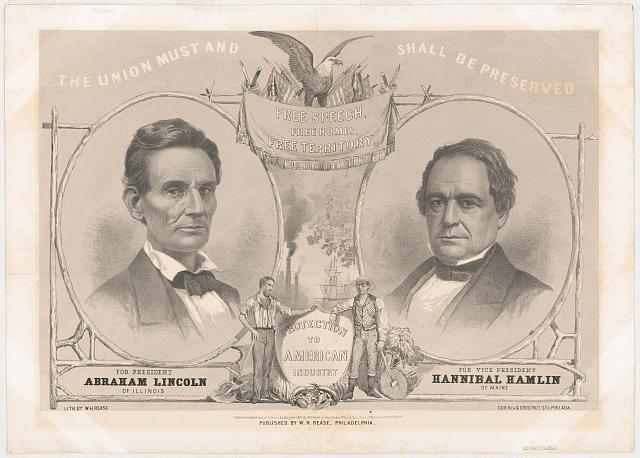
These political poster examples showcase that the power of well-designed campaign posters can capture voters’ attention and inspire support for a candidate. Each poster contributed significantly to the election because online and digital media had far less impact than today.
What design principles should effective campaign posters have?
Creating a powerful and impactful campaign poster requires a combination of fundamental design principles and elements. Here are some essential aspects to consider when designing a campaign poster:
Clarity of theme
The theme and message of your poster should be clear and easy to understand. The main goal of the poster should be evident at first sight, allowing viewers to quickly understand the candidate’s main goals or the cause being promoted.
Visual appeal
An eye-catching design is crucial for capturing the attention of viewers. Use a combination of colors, typography, and imagery that is visually appealing and resonates with your target audience.
And don’t forget the emotions and associations that different colors and design elements evoke – use them to create a compelling visual narrative.
Conveying the candidate’s main goals
Your poster should effectively communicate the candidate’s main goals and objectives. This can be achieved through concise messaging, slogans, or taglines summarizing the candidate’s platform. The text should be easy to read and stand out against the background.
Simplicity and focus
A simple and focused design is often more impactful than a cluttered one. Too many design elements or excessive text can make the poster challenging to read and understand. That is why you should focus on critical elements to convey your message.
Consistency
Maintain consistency in your design elements throughout all campaign materials, such as color schemes, typography, and imagery. Consistency helps to create a cohesive visual identity for your campaign. It makes it easier for viewers to recognize and remember your program.
Call to action
Include a clear call to action (CTA) that encourages viewers to take a specific action, such as voting for the candidate and building an opinion on a subject matter. The CTA should be prominent and easy to understand, guiding the viewer towards the desired action.
Incorporate these design principles and elements into your campaign poster. You will create a compelling and impactful design that resonates with your target audience and contributes to your campaign goals.
Why are campaign posters a powerful tool in politics?
Campaign posters have played a significant role in shaping public perception and generating support throughout history. They are an accessible and versatile medium for conveying messages and influencing public opinion.
Here are some ways campaign posters impact voters and campaigns:
Shaping public perception
Campaign posters create a lasting impression on the public by presenting candidates or causes in a visually appealing manner. The posters often use powerful imagery, bold colors, and concise messaging to evoke emotions and shape public opinion.
If you present an idealized image of a candidate or cause, your poster can influence how the public perceives it.
Inspiring curiosity
Well-designed campaign posters can attract viewers’ interest and encourage them to learn more about a specific candidate. With curiosity gaps, posters can somehow entice viewers to engage with a campaign. This curiosity-driven engagement then leads to increased support and voter turnout.
Generating support
Campaign posters can rally support by presenting a clear and compelling message. The posters typically convey a candidate’s main goals, political platform, or stance on crucial issues, which makes it easier for voters to understand and support their campaign. The posters often contain a call to action to encourage viewers to vote, volunteer, or donate to a campaign.
Creating a visual identity
Consistent design elements in campaign posters help create a cohesive visual identity for a campaign. The visual identity makes it easier for voters to recognize and remember a candidate and her program and contributes to the campaign outcome.
What are the features of campaign posters in the digital age?
In the era of social media and online campaigning, campaign posters have adapted and evolved to remain effective. While traditional print posters are valuable, digital posters and visuals have become increasingly important in reaching and engaging a wider audience.
Here are some ways campaign posters have adapted to the digital age:
Digital adaptation
Campaign posters have transitioned from physical prints to digital formats, which can be shared and digested more easily on social media platforms and websites. Digital posters are also easy to create using online tools and templates, making designing and distributing them easier for campaigns.
Integration with social media
Campaign posters are now designed to be easily shared on social media platforms like Facebook, Twitter, and Instagram. Campaigns can reach a larger audience and engage with potential supporters more interactively and dynamically.
Social media platforms and paid advertising give campaigns numerous possibilities to target specific demographics and interests to increase the effectiveness of their messaging.
Virality and shareability
Digital campaign posters can be designed to be more shareable and to go viral, reaching a larger audience than traditional print posters. The virality means more visibility and support and creating a sense of community and engagement among the audience.
Combining print and digital
Many modern campaigns are using a combination of print and digital posters to appeal to different preferences. Print posters are still effective in capturing attention and providing an offline experience. In contrast, digital posters are easy to share and have the potential to reach a larger audience online.
What online tools can be used for creating your own campaign poster?
There are several online tools available for creating outstanding campaign posters. Here are five popular options:
Canva
Canva is a versatile and user-friendly online design tool that offers a wide range of templates, including campaign posters. It features a drag-and-drop interface to easily customize your design, add text, and incorporate images.
PosterMyWall
PosterMyWall is an online application that provides numerous campaign poster templates and design tools. It allows you to create professional-looking posters and invitations without spending much money.
Fotor
Fotor‘s campaign poster maker offers over 500 campaign poster templates and various design and AI tools to create unique campaign posters. Fotor provides custom functions to change the background color and font effects.
Adobe Spark
Adobe Spark is a versatile online design tool suitable for beginners and professionals. The tool offers a click-and-drag template system with intuitive editing tools that allow you to create eye-catching posters.
Appy Pie
Appy Pie features AI Campaign Poster Maker, allowing you to create customized campaign poster designs within minutes. It also has various templates and design options to help you create a great poster for your campaign.
How can you create your own campaign poster using Canva?
Because Canva is our favorite tool, we want to provide a quick tutorial on how you can create your campaign poster with this tool.
Here’s a step-by-step guide on how to create an effective campaign poster using Canva:
- Choose a template: Visit Canva’s campaign poster templates page and browse the available designs. Select a template that you find helpful with your campaign’s theme and message.
- Customize the design: Once you’ve chosen a template, customize it to fit your campaign. You can modify the background color, add images, adjust typography, and modify other design elements. Remember, follow the design principles, such as clarity of theme, visual appeal, and conveying the campaign’s primary goals.
- Add your content: Insert your campaign’s message, slogan, tagline, and other relevant information (e.g., the candidate’s name, position, and critical issues). Ensure the text is easy to read and doesn’t compete with the background.
- Review and refine: You should pause and review your poster design at this stage. Make any necessary adjustments to ensure that it effectively communicates your campaign’s message and has a strong visual impact.
- Download and share: Once satisfied with your design, download it in your preferred format (e.g., JPEG, PNG, or PDF). You can then print your poster for physical distribution or share it digitally on social media platforms and your campaign website.
Final thoughts
As you can see, campaign posters have long been essential in connecting with voters and volunteers. They help shape public perception and generate support for candidates and causes. Despite the rise of digital media and online campaigning, posters are relevant in modern political campaigns.
We hope this article will inspire you to create countless posters that will make your campaign shine. While you are working on your posters, check HubDialer’s suite of tools for campaign outreach – they will perfectly blend with your campaign efforts.
